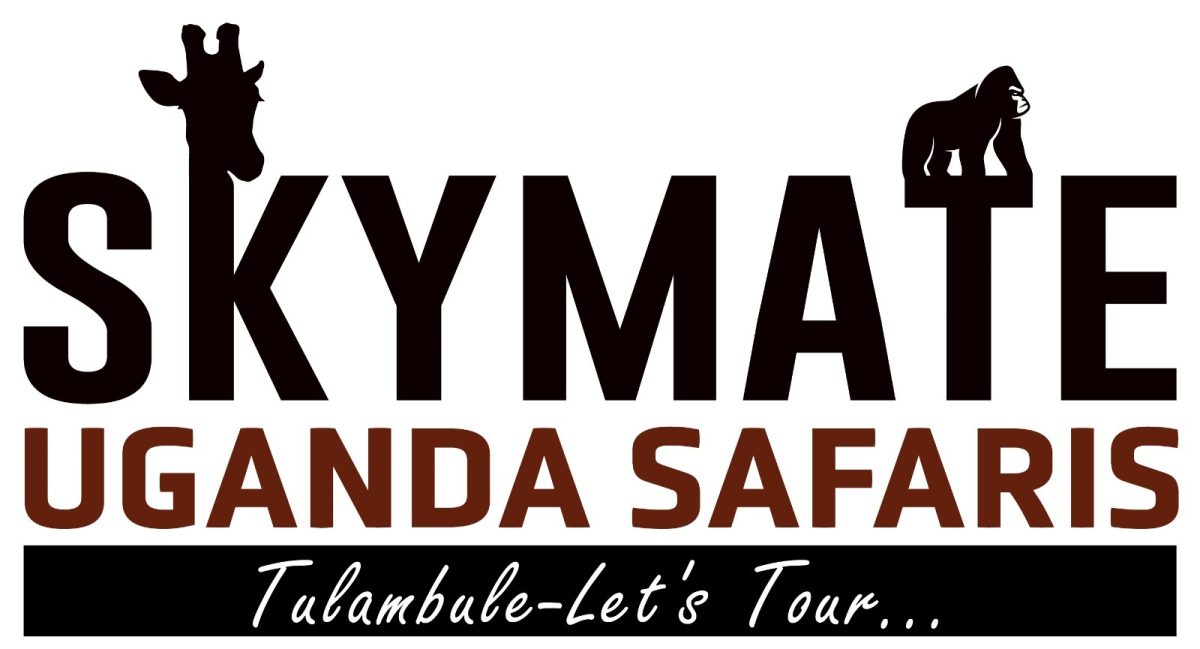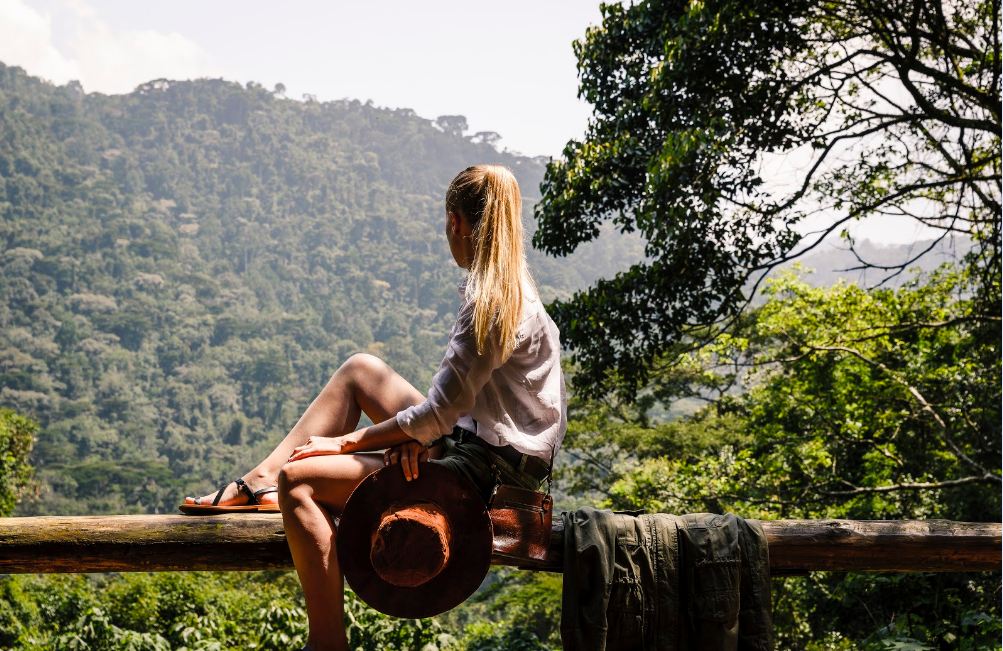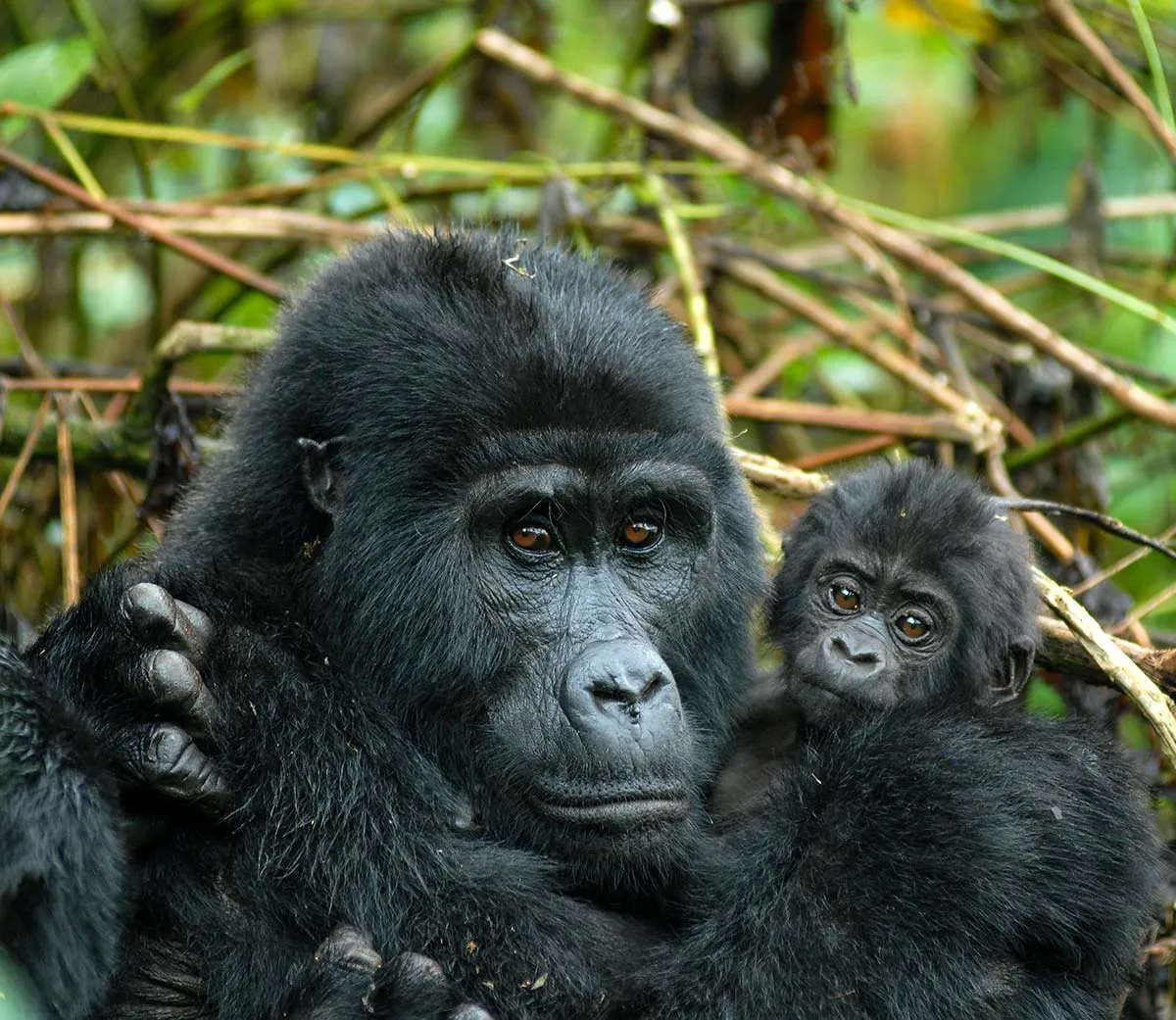Table of Contents
ToggleIf you are planning a gorilla safari to Uganda or Rwanda gorilla tour, it is essential to have a well-prepared packing list for gorilla trekking to ensure a safe and enjoyable adventure. Uganda and Rwanda are the best countries in world to see gorillas in their natural habitat. On a trek to see the gorillas, you’ll be hiking in the rainforest jungle.
While the treks themselves can be humid and muddy, once you are face-to-face with a majestic silverback or watching a female gorilla play with her baby, the effort to meet these rare creatures all seems worth it. To make the most of your Gorilla trekking safari experience, follow this comprehensive packing list for gorilla trekking that covers everything you need, from clothing to essential gear.
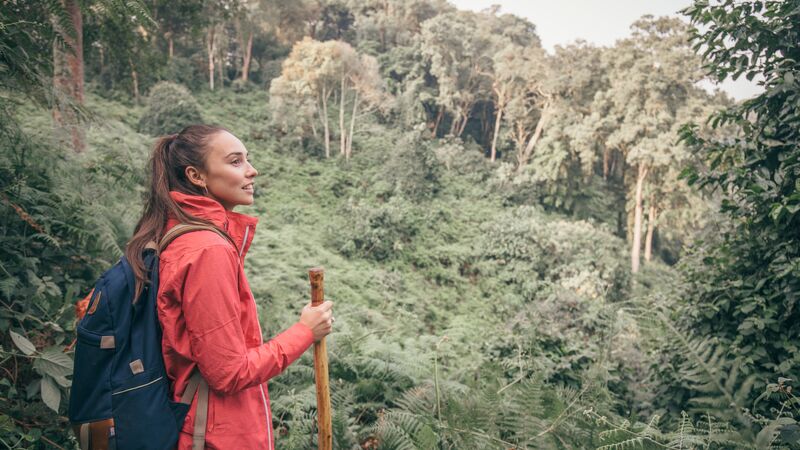
Recommended Gorilla Trekking packing list in quantity
Please note that the quantity listed below is based on an average. It depends on the person and how they want to use it. However, we recommend you pack as lightly as you can. And remember that during your Rwanda or Uganda gorilla trekking safari tour, you may have to take a light aircraft to get to your lodge or camp or to an airstrip near the gorilla national park. These aircrafts will have strict baggage size and weight limits.
Clothes for Gorilla Trekking (What to Wear)
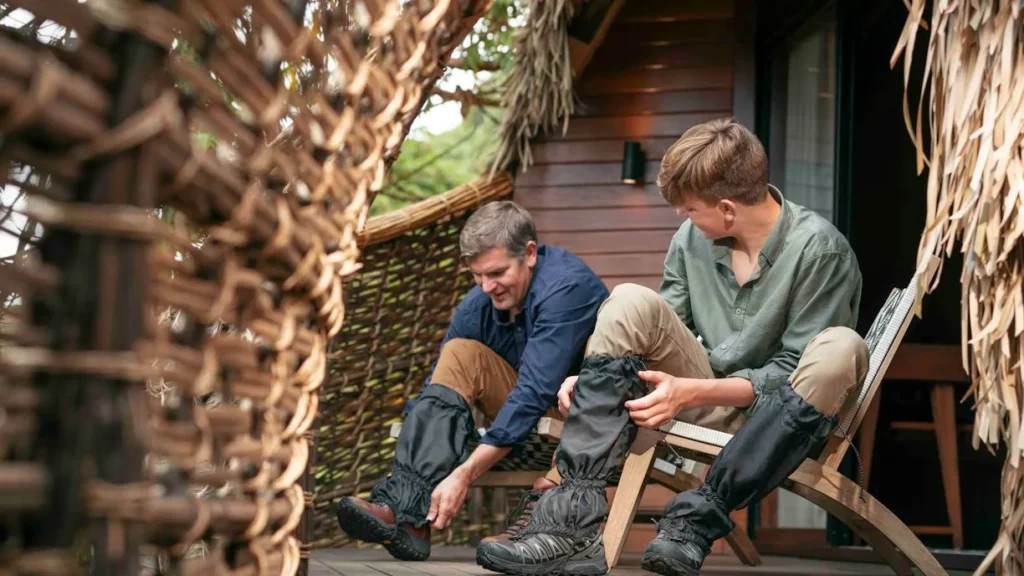
1. Lightweight, neutral coloured clothing
- Quick dry clothing is the best clothes to pack for gorilla trekking in Uganda and Rwanda.
- High humidity coupled with uphill trekking can be sweaty business.
- Also come with clothes with colours of nature so that you blend in with your surroundings.
- Go with greens, greys and browns in lightweight material.
- Don’t wear camouflage. It is illegal for civilians to wear them in many areas.
- Also, avoid wearing animal print; gorillas may become worried at ‘seeing a leopard ‘, for example.
2. A Decent Rain jacket or poncho
- You can carry a waterproof poncho or jacket. But if you may want your arms free, pack a tried and tested rain jacket that works.
- These are essential items to include in your packing list for gorilla trekking especially if you are planning your gorilla safaris during the rainy season months of March to May and late September to early December.
- Mountain gorilla trekking is done in tropical rainforests of Bwindi Impenetrable National Park and Mgahinga Gorilla National Park in Uganda as well as Volcanoes National Park in Rwanda and Virunga National Park in Congo.
- In these rainforest parks, you can expect rainfall at time of the year.
3. Proper walking boots or shoe for gorilla trekking
- You will need hiking shoes or boots you have walked in before.
- Think comfortable, non-slip, ankle support.
- A trek to see gorillas can take up to seven hours of trekking on muddy & slippery trails.
- Running shoes are not recommended.
- And your best footwear will be thick-soled and waterproof
4. Pair of Long socks/Gaiters for gorilla trekking
- These are not particularly fashionable but necessary.
- Gaiters help keep sand, grass seeds and insects away from your ankles and socks.
- Knee-high ones will keep the bottoms of your trousers dry.
- It is also a good idea to pack a pair of long socks so that you can tuck your trousers into them and avoid any ants or insects getting to your ankles.
5. Waterproof trousers
- It is recommended to wear lightweight trousers or leggings.
- These should be able tuck into socks or fit under gaiters for protection against stinging nettle. It is not recommended to wear shorts on a gorilla trekking adventure.
6. Long-Sleeved Shirt for gorilla trekking
- The gorilla jungle differs greatly from the savannah plains.
- On a gorilla safari, you will be trekking through brush and bushes.
- If your skin’s sensitive to touch and scratch, then a long-sleeve hiking shirt should be on your packing list for gorilla trekking.
7. Safari sun hat, Eyewear, and Sunglasses
- Rainy season or not, wherever you go in Africa a good coverage hat is vital.
- Tinted fashion glasses may look good in your photos, but your eyes will thank you for polarised lenses or UV protection.
- Also note that glasses may mist up in the humidity or rain. Plan to carry contact lenses too, all the better to see the gorillas with.
8. Warm clothes for the evening and early morning.
- The sweater will keep you warm during the cold evenings and mornings.
- Volcanoes National Park, Mgahinga Gorilla National Park and Bwindi Impenetrable National Park are located in areas of high altitudes
- These parks have several hills, mountains and volcanoes on the horizon which release cold winds and mist.
9. Gloves for gorilla trekking
- It is highly recommended to include strong gardening gloves in your packing list for gorilla trekking in Uganda and Rwanda.
- In dense parts of the rainforest, you will want these protective gloves to push vegetation aside. You will also be thankful to have dry hands when its finally time to haul out your camera and start photographing gorillas.
10. Hair ties and headband
- You won’t want anything obscuring your view of the magnificent mountain
- Your hair could also get caught in the branches if not properly tied.
Gears & Other Items to include in your Packing List for Gorilla Trekking
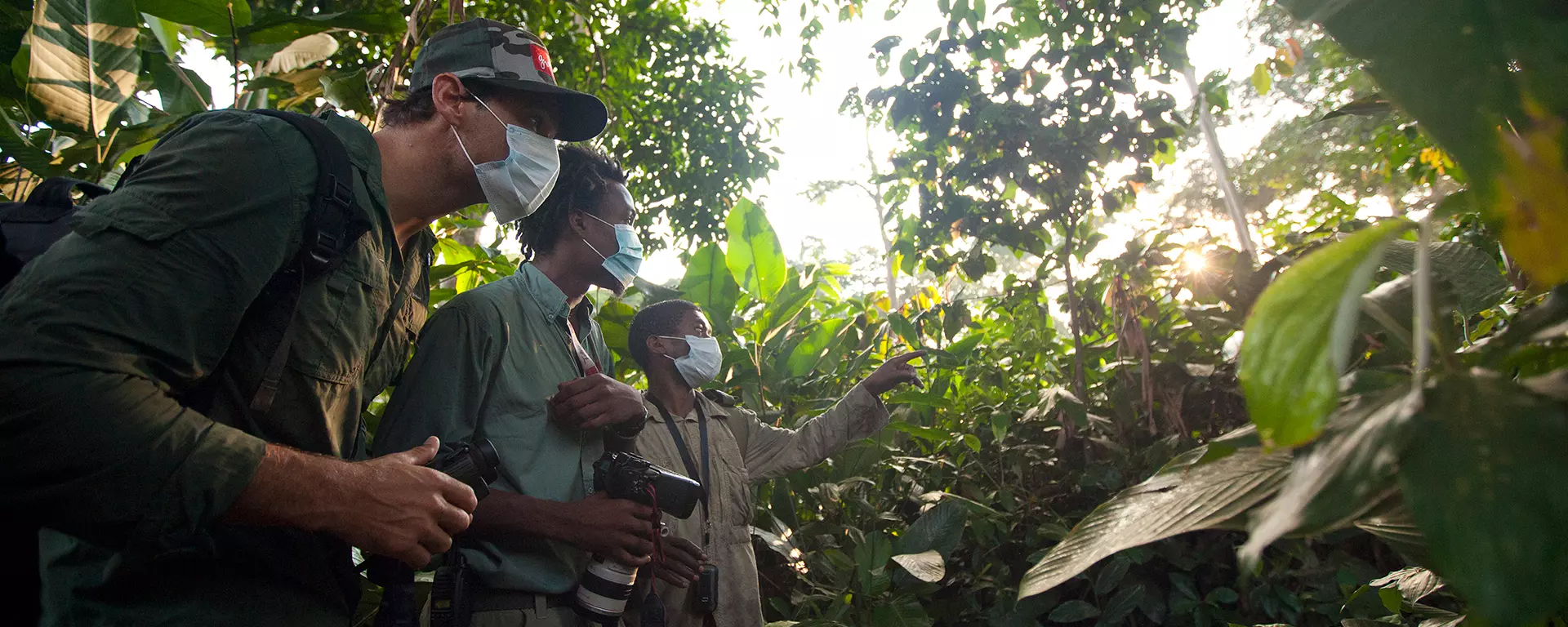
1. Camera
- Please note that carrying a long zoom lens will be heavy.
- Choose a mid-size lens
- Bring along a cloth as a fogged-up lens when capturing a gorilla’s portrait will not do!
2. Walking stick for gorilla trekking
- A walking stick is good to have on any hike.
- You can carry a lightweight, fold-up stick which will help you when you need a bit of support, and to move vegetation out of the way.
- If you cannot carry one from home, you can get a trekking pole at your local lodge or at the park headquarters during the gorilla trekking briefing.
3. Cash
- As you prepare your gorilla trekking packing list, consider carrying some cash.
- After your incredible time with the gorillas, you may want to tip your guide.
- Read more about tipping in Uganda
4. Water and snacks
- Gorilla trekking can take between 30 minutes to 6 hours.
- Trekking for long distances could get you tired.
- Water and snacks will keep you going throughout your trek.
- Be sure to keep hydrated, especially at altitude.
- Your lodge will provide you with water.
- Avoid littering the park with plastic bottles.
5. Packed Lunch
- As noted above, gorilla trekking is
- It all depends on the location of the gorilla family on the day of the trek.
- The activity can take several hours of trekking and you could get tired and hungry.
- Your lodge should prepare for you packed lunch just in case.
6. Toiletries
- The toiletries include like toilet paper in case you want to ease yourself during a long gorilla trek. You need to also come with your own hand sanitizers and wipes.
7. Insect Repellent
- Be prepared for plenty of insects.
- This is standard in any rainforest environment but well worth the trouble to see gorillas and be in such a pristine place.
8. Gorilla Trekking Permits and Passport
- You will be required to show your gorilla permit and passport at the hotel and park offices just before beginning your trek. Without the required travel documents, you will not be allowed in the country and to track the mountain
9. Waterproof backpack
- You will want to keep your valuables like cameras and binoculars dry.
- A small backpack to carry camera, personal items and a water bottle is a good idea.
10. First aid kits
- All gorilla treks are led by well-trained National Park guides, rangers and trackers.
- The ranger or head guide carries a first aid kit and will provide a comprehensive safety briefing at the start of each trek.
More Tips for Preparing Your Packing list for Gorilla Trekking
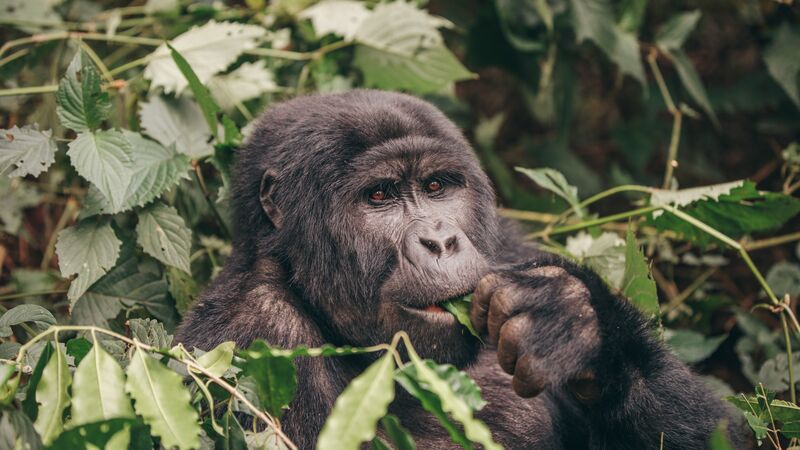
- Packing light is essential for a more enjoyable trek but choose lightweight and multi-functional gear, minimize unnecessary items or share some items with your trekking partners to reduce weight.
- When choosing a sun hat, consider functionality over form. Choose those that compliment khaki shorts and provide neck protection as well. A wide brimmed hat with a drawcord to keep your hat on in windy conditions is highly recommended.
- Insect repellent DOES NOT replace the need for anti-malaria medicine! Malaria prophylaxis should be accompanied with insect repellents.
- Don’t for get extra batteries for your camera and remember to bring the charging cable.
- You may also like, what to pack for a general Uganda Safari?
FAQs About Things To Pack For Gorilla Trekking

1. Do you need binoculars for gorilla trekking?
A pair of binoculars is not essential for gorilla trekking but you can come with it if you would like clear viewing of some other animals in the forest like birds, monkeys, forest elephants, buffaloes, forest duikers, bush pigs, and more.
2. Do I need to hire a porter?
You will be expected to carry your own personal items for gorilla trekking including water, a rain jacket and cameras. But you can absolutely hire a local porter to assist you. Hiring a porter on a gorilla trek is a common practice by travellers of all ages and abilities.
The porters will carry your bag, and help to you navigate some of the steeper, or trickier sections of the trek. Not only does it make the trek easier for you, but you are also providing a valuable source of employment for locals which boosts their confidence in responsible tourism.
The cost of hiring a porter on a gorilla trek is between US$ 10 to US$ 20, plus any tips you may choose to provide in addition to that.
2. How do you prepare for gorilla trekking?
You need to be at least walking fit – the guides ensure you take plenty of breaks – and properly equipped for a tough environment. We recommend broken-in hiking boots that protect your ankles, double-layered socks (cotton inners and thick outers) plus knee-high gaiters.
3. What shirts are best for gorilla trekking?
Long sleeves are a good idea to help protect you from the cold during the early colder hours of your trek. They also offer protection from insects, nettles and vines that would scratch you.
Choose a shirt that’s a neutral colour such as khaki, green or light brown. Bright colours aren’t advisable (it’s hard to be an unobtrusive gorilla spectator in a neon pink parka). Blue and black are also unadvisable, as these can attract insects like tsetse flies, believe it or not.
4. What shoes are best for gorilla trekking Uganda?
Hiking boots are the best option for gorilla trekking. They are sturdy, comfortable and provide good grip on slippery and muddy terrain. The boots should be waterproof, lightweight, and have ankle support to protect you from injuries.
5. Which month is best to trek gorillas?
The best months to go for gorilla trekking in Uganda and Rwanda are from June to September and December to February.
6. Do you need gloves for gorilla trekking?
You will be required gloves to protect your hands during your gorilla trek. As you move in this forest, remember that it can get slippery and somehow you need to hold on something just in case such happens. If you happen to touch some itching plants, trees or even climbing trees, you may be harmed.
7. What colors to avoid gorilla trekking?
Avoid black and dark blue as these colors attract tsetse flies. Wear neutral colored, lightweight clothing on your gorilla trekking excursion.
Conclusion
Gorilla trekking is one of Africa’s rewarding wildlife safari experiences. By following this comprehensive packing list for gorilla trekking, you will be well-prepared to embark on your journey and create unforgettable memories. Remember to respect the environment, fellow trekkers, and gorilla trekking rules during your adventure.
If you’ve any questions regarding the packing list for gorilla trekking, feel free to CONTACT US. We’ll answer your questions as soon as possible and help you design a gorilla trip to Rwanda and Uganda with a comfortable itinerary. For quick information, you can WHATSAPP US.
